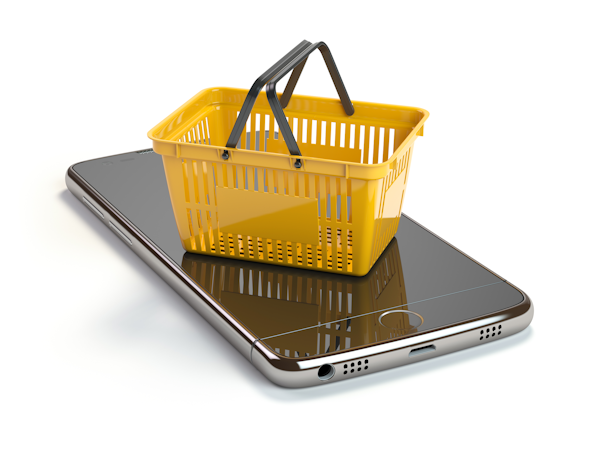One of the economic sectors witnessing a significant increase in online sales during the pandemic was the grocery sector. Daniel Keyes, a Research Associate at Business Insider Intelligence, explains, “The coronavirus pandemic has brought online grocery — a promising but formerly niche industry — to the fore. The combination of shoppers’ interest in avoiding public places, government orders to stay at home, and the continued need for groceries and essential goods has made online grocery delivery services from retailers like of Walmart, Amazon, Target, and Instacart indispensable.”[1] At the same time, he notes, online grocery sales remain a fraction of in-store sales. Last fall, Chicory, a leading digital shopper marketing platform for CPG and grocery companies, published the results of a survey that found, “Online grocery usership in October 2020 exceeded levels in all other quarters, indicating that consumers will continue to use online grocery services to do their shopping. Usership grew by 18.43% compared to pre-pandemic levels.”[1] Chicory analysts went on to note, “More consumers are consistently using online grocery services to replace their regular weekly brick and mortar shops compared to pre-COVID-19 usage in January 2020.” They also observe, “There are two distinct online grocer users: those who regularly use online grocery services to replace their regular in-store shopping and those who use online grocery services for a convenience only once in a while.”
According to Keyes, the pandemic has accelerated the penetration rate of online grocery sales. He explains, “Insider Intelligence projects that as the pandemic runs its course in the next few months, online grocery adoption will reach 55% of US consumers by the end of 2024. This would still be much greater penetration than the online grocery market would’ve reached without a pandemic.” If a second wave of Covid-19 hits the U.S., like it did in India, Keyes predicts the penetration rate of online grocery shoppers could “climb quickly, hitting 66% in 2024 instead.” According to BI Intelligence, “Penetration is defined as the percent of consumers who have ever purchased groceries online for delivery or pickup.” What most of these surveys don’t account for are shoppers buying direct from manufacturers. Although direct-to-consumer (DTC) sales remain relatively small, they are also growing.
Changing Consumer Behavior
One of the consumer cohorts poised to take advantage of online grocery shopping are baby boomers. As they age, experience mobility issues, or stop driving, ordering online and either picking up orders curbside or having them home delivered become attractive options. While of these predictions sound upbeat, Rajesh Midha (@rajeshmidha), President and Chief Experience Officer at Bottle Rocket, advises grocers to be a little cautious as they contemplate their online grocery sales strategies. He explains, “The sector could experience a downfall as quick as its rise [as vaccines become] readily available and consumers swarm back to restaurants. Consulting firm Bain & Co. suggests revenue rates may shrink to 2-5% this year — or could even drop by as much as 7%. It’s costly to fulfill e-commerce orders, and the loss of in-store impulse buying could be one of the most damaging effects to profit margins. How well grocers cultivate customer loyalty with creative digital strategies will determine their market positioning in the unpredictable year ahead.”[3]
Keyes agrees the next couple of years could be a watershed for the online grocery business. He explains, “The online grocery services that are best able to handle surging order volume [during the pandemic] will likely be the most popular services after the pandemic subsides because consumers will be able to rely on those services to consistently bring them groceries. Alternatively, if they find it difficult to receive orders, consumers may abandon online grocery altogether.” In an attempt to foster loyalty and long-term online purchasing, Jeremy Neren (@JeremyNeren), Co-Founder and CEO at GrocerKey, asserts, “Retailers must define their e-commerce strategy, which requires deliberate planning in the areas of customer acquisition, order fulfillment, digital merchandising, click and collect, delivery, digital media strategy, and KPI monitoring.”[4]
In a follow-on article, Neren insists the pandemic has presented an opportunity for grocers and CPG brands to collaborate and strengthen online grocery shopping. He explains, “As CPG brands fight to stay in front of customers, retailers have an enormous opportunity to build a digital media business. By leveraging their e-commerce site and mobile apps as digital assets, retailers are readily primed to host sponsored content from CPG partners to drive sales and boost their bottom line. … For grocery retailers, digital media and merchandising are all about building customer loyalty through a seamless and relevant experience.”[5]
Alternative Online Grocery Consumer Paths to Purchase
Analysts from Chicory assert, “The grocery shopper’s path to purchase from digital to in-store and other online environments has always been obscure.”[6] Most discussions about online grocery shopping focus on orders from traditional grocery chains; however, today consumers have a bevy of options for ordering food products online. One of those options is meal kits. The staff from PYMNTS.com notes, “It has been a banner year for meal subscription services, as restaurant closures prompted consumers to seek out new ways to meet their food needs. … Stay-at-home mandates and consumers’ own contagion concerns provided these companies with a serious boost, as consumers sought non-restaurant ways to create meaningful culinary experiences.”[6] Nevertheless, they note, “Apart from Freshly, which delivers cooked meals, many meal subscription services provide ready-to-cook meal kits, which leave consumers to do a significant share of the meal prep work. Given the option to eat on-premises, will consumers continue to subscribe to often costly and high-effort meal delivery services?” Good question.
Another option is purchasing goods directly from manufacturers. In addition to being able to find products on a manufacturer’s website, consumers are often directed those websites from food blogs, recipe publishers, and social media sites. Chicory reports consumers, when asked how likely they were to purchase advertised or promoted products, indicated they were most prone to respond to ads in digital recipes, which slightly surpassed ads on a retailer’s websites. This is closely followed by shoppable tech, like a ‘buy ingredients’ button in a digital recipe, outweighing both an ad on a coupon/circular website and an ad on social media. Yuni Sameshima (@YuniSameshima), CEO and co-founder of Chicory, says, “At Chicory, we firmly believe that omnichannel shopping behaviors are here to stay. … Digital habits greatly influence shoppers’ online and in-store shopping behaviors.” With CPG and other food prices on the rise, consumers are likely to go value-hunting online in the months ahead.
Another option available to some consumers is voice-based technology. Doug Rogers, chief security officer of Wegmans, states, “While voice-based technology comes with a host of complexities, the fast-growing popularity of systems like Amazon’s Alexa and Google’s Assistant means retailers who choose not to embrace the concept may come to regret that decision.”[8]
Concluding Thoughts
Despite the added complexities and costs of online grocery operations, Jim Dudlicek (@jimdudlicek), Director of Communications & External Affairs at National Grocers Association, concludes, “Even before the pandemic, competition in the grocery arena had reached a point at which retailers could no longer afford to stand still. Perpetual improvement, self-evaluation and innovation are table stakes. This statement is even more true after the seismic changes of the past year. So, when it comes to e-commerce, there is no going back. To ensure sales growth and customer loyalty, there is only forward.” Although many subject matter experts believe changes in consumer behavior brought about by the pandemic will continue, others aren’t so sure. This is particularly true when it comes to online grocery shopping. Only time will tell which pandemic behaviors will stick.
Footnotes
[1] Daniel Keyes, “THE ONLINE GROCERY REPORT: Coronavirus is accelerating US online grocery shopping adoption—here are the market stats, trends and companies to know,” Business Insider, 3 February 2021.
[2] Chicory, “Chicory Survey Reveals There Are 18% More Online Grocery Users Now Compared to Pre-COVID-19, Exceeding Levels During the Height of the Pandemic,” Business Wire, 26 October 2020.
[3] Rajesh Midha, “New Class of Online Grocery Shoppers Brings Fresh Industry Demands,” SupplyChainBrain, 4 February 2021.
[4] Jeremy Neren, “Building A Successful E-Commerce Grocery Business: Customer Acquisition & Retention,” Forbes, 12 February 2021.
[5] Jeremy Neren, “Building A Successful E-Commerce Grocery Business: Digital Media And Merchandising,” Forbes, 18 March 2021.
[6] Chicory, “Chicory’s New Survey Decodes The Omnichannel Shopper’s Path,” The Shelby Report, 23 April 2021.
[7] Staff, “Post-Pandemic Future Remains Uncertain For Meal Subscription Services, PYMNTS.com, 5 April 2021.
[8] Sam Silverstein, “‘Not a fad’: Voice-based technology holds promise for grocers,” Grocery Dive, 27 January 2021.
[9] Jim Dudlicek, “For Grocers, There’s No Going Back On E-Commerce,” The Shelby Report, 9 March 2021.





